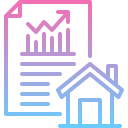Measuring Housing Affordability in Urban vs Rural Areas
Chosen theme: “Measuring Housing Affordability in Urban vs Rural Areas.” Welcome to a clear, people-first exploration of how costs, incomes, and daily realities shape where we can live well. Join the discussion, share your story, and subscribe for future insights.
Defining Housing Affordability: Beyond One-Size-Fits-All
Spending no more than thirty percent of income on housing is a familiar benchmark, but it ignores transportation, childcare, and medical costs. In dense cities it may understate savings from transit; in rural areas it can overstate comfort.

Urban vs Rural Price Mechanics
01
Rents, Mortgages, and the Shape of Local Markets
City rents track neighborhood amenities, transit lines, and tight vacancy. Rural ownership can look cheaper per square foot, but mortgage underwriting, appraisal gaps, and limited inventory often complicate the apparent bargain and shape real affordability.
02
Utilities and Energy: When Square Footage Meets Climate
Larger rural homes can invite bigger heating and cooling bills, even with lower purchase prices. Urban multifamily units sometimes benefit from shared walls and efficient systems, reducing energy outlays that quietly tilt affordability calculations month after month.
03
Land, Zoning, and Density: The Invisible Hand on Supply
Zoning limits, lot sizes, and infrastructure capacity influence what gets built. Urban restrictions can constrain supply near jobs, raising rents. Rural infrastructure costs can hinder development, keeping choices scarce and amplifying price shocks when demand shifts.
Transportation and Time: The Missing Half of Affordability
A reliable car can cost hundreds monthly after payments, insurance, fuel, maintenance, and parking. A good transit pass can be far cheaper. Urban access often reduces vehicle dependence; rural realities may require two cars, reshaping affordability entirely.



Data You Can Trust: Building a Solid Method
Household incomes and housing costs from national surveys are invaluable but come with sampling error, especially in small rural counties. Always note confidence intervals, and avoid overconfidence when drawing neighborhood-level conclusions from coarse estimates.
Data You Can Trust: Building a Solid Method
Property tax rolls, assessor data, and listing platforms offer timely signals on rents and prices. Blending sources can correct survey lags, but requires cleaning, deduplication, and bias checks so urban hotspots and rural outliers are fairly represented.

Amira the Barista: Paying for Location, Saving on Wheels
Amira pays a premium for a small urban studio but walks to work and groceries. No car, no parking, lower utilities, and a weekend side gig nearby make thirty-three percent rent feel survivable—and sometimes smarter than a distant bargain.

DeShawn the Nurse: Space to Breathe, Miles to Drive
DeShawn bought an affordable rural home with a garden and extra room for his mother. The mortgage is light, but two cars, longer commutes, and rising fuel upset the budget. Residual income reveals the pinch more clearly than ratios.

The Teacher’s Choice: Small Town, Big Tradeoffs
A mid-career teacher moved to a small town for a modest mortgage and supportive neighbors. Utility spikes and limited rental options for relocating colleagues challenge the district’s hiring, showing how affordability shapes community stability and services.
What Works: Policy, Community, and Personal Moves

Local Tools: Inclusionary Zoning, Vouchers, and Tax Credits
In cities, inclusionary zoning and vouchers can align new supply with need. Rural areas may lean on tax credits and rehab funds for aging stock. Measure outcomes with H+T-aware metrics so wins reflect real household budgets.

Digital Work and Rural Housing: The Broadband Effect
Remote work can boost rural demand, raising prices where supply is thin. Broadband and small-scale infill help stabilize affordability. Track shifts carefully to avoid price shocks that displace long-time residents or burden essential workers.

Join the Conversation: Share Data, Subscribe, Shape the Next Post
Tell us which metrics your community trusts, post your neighborhood’s numbers, and challenge our weights. Subscribe for new datasets, case studies, and reader-led experiments that keep urban and rural affordability measurement honest, practical, and people-centered.
